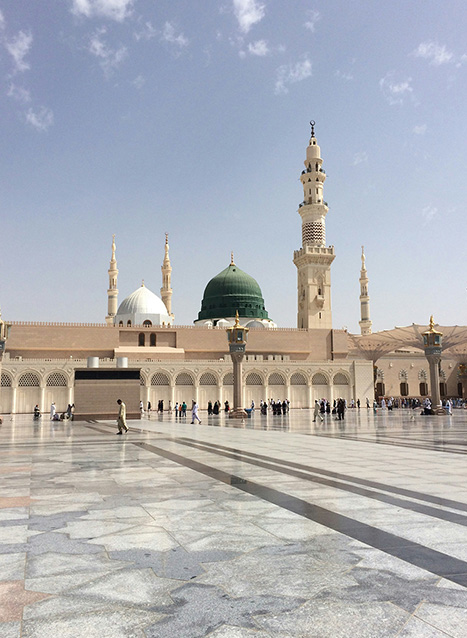
Houthi Missile Attacks on Saudi Arabia and Ongoing Risks
28 Mar 2018
On 26 March 2016, Houthi rebels launched seven conventionally armed ballistic missiles against targets in Saudi Arabia. The group launched three missiles against Riyadh, two against Jizan, and one each against Najran, and Khamis Mushayt. Patriot anti-missile systems, operated by the Saudi Air Force, reported the destruction of all seven Houthi rockets, although video imagery released suggested at least one Patriot misfired and impacted the ground near its launch site.
Key Points
- On 26 March 2018 Yemen’s Houthi rebel group launched seven ballistic missiles against four Saudi cities.
- At least one person was killed as a direct result of the bombardment.
- This marks the largest coordinated use of ballistic missiles by the Houthi in a coordinated attack.
Situational Summary
Armed Conflict: On 26 March 2016, Houthi rebels launched seven conventionally armed ballistic missiles against targets in Saudi Arabia. The group launched three missiles against Riyadh, two against Jizan, and one each against Najran, and Khamis Mushayt. Patriot anti-missile systems, operated by the Saudi Air Force, reported the destruction of all seven Houthi rockets, although video imagery released suggested at least one Patriot misfired and impacted the ground near its launch site.
The one confirmed fatality following the incident was an Egyptian expatriate taxi driver in Riyadh, two of his colleagues were also wounded. These casualties appear to have been inflicted by falling debris following a successful intercept. Other pieces of destroyed rocket landed across all the targeted cities.
The Houthi rebels issued a statement indicating that the targets of all seven missiles were airports in the respective cities, and that the attack was conducted to commemorate the third anniversary of the start of the civil war.
Solace Global Comment
This attack is not the first use of ballistic missiles by Houthi rebels against targets within Saudi Arabia; however, it is by far the largest, and also marks the first fatality from such an attack in Riyadh. As such, it is highly likely to provoke a response from the Saudi-led coalition fighting the Houthis in Yemen.
The attack used Burkan ballistic missiles in order to target the various cities. These weapons are of notionally Yemeni origin, being derivatives of North Korean exports; however the Saudi coalition has stated their technical components, and the equipment and training to operate them is highly likely to have originated from Iran. This is impossible to verify as all rocket components were gathered by the Saudi government, and have not been subjected to independent scrutiny. It is highly likely that the Saudi government will use this attack as further evidence of Iranian aggression in the region, and attempt to rally a more coherent base of international support for the Coalition’s actions in Yemen and the wider region.
The narrative of Iranian arms smuggling is not confirmed fact, verifiable evidence suggests that most intercepted arms shipments in Yemeni waters have been outbound, heading to Somalia; rather than inbound from Iran. The weapons seized during such intercepts have been limited to small arms and shoulder-launched rockets, nothing of the scale of a ballistic missile and its associated launch equipment.
It remains a realistic probability that these weapons were in the Yemeni government’s possession before the war, coming into Houthi ownership when approximately two-thirds of Yemen’s armed forces defected at the start of the civil war. It is believed that Houthis maintain the capability to locally manufacture copies of the imported missiles in small quantities, however video footage of one such weapon exploding on the launch pad strongly suggests that these are less effective than the original versions. This narrative of existing stockpiles and limited local production is supported by the relatively sporadic use of these weapons prior to 26 March, suggesting a limited and finite supply.
The Houthis are likely to return to a more sporadic program of rocket attacks following the recent strike, constricted by the limited availability of the weapons, and the limited tactical value their attacks provide. As with their previous deployment of water borne improvised explosive devices (WBIED), there is little incentive for the group to deploy these weapons against neutral third parties; a shift to terror tactics would likely result in overwhelming international support for their enemies. However, the missiles provide the rebels with a capability to strike into Saudi territory and impose some, limited, pressure on the Saudis. Primarily, these attacks force the Saudis to maintain and fund a permanent air defense presence around their major cities, which are significantly more expensive than the missiles they are designed to intercept. The risk of foreign assets being directly targeted remains low, although the likelihood of collateral damage to personnel and assets remains, demonstrated by the fatality inflicted by debris in this most recent attack.
SECURITY ADVICE
Armed ConflictModerateThe direct threat posed by further strikes against Saudi cities remains limited; Saudi defensive measures have so far proven highly effective against the Houthi’s weapons, and the ballistic missiles rarely reach their intended target. Whilst the threat cannot be entirely eradicated, particularly from debris, major Saudi cities operate air raid sirens, and shelter should be sought if these are heard.
Solace Global would advise travellers to employ a locally-vetted driver for all travel in Saudi Arabia to mitigate the risk of poor driving standards throughout the country, as well as the threat of harassment, and unwanted attention. Use of travel tracking and intelligence software is recommended in order to ensure travellers remain aware of security developments, and to permit effective implementation of employer duty of care.